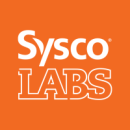Brian Bush and his product team never send a new product into the world without considering the weeks, months and years post-launch.
The team’s ultimate goal is to establish a feedback loop that paints a clear picture of the value customers find in a given product. To create that loop, they must define what it is they do and do not know before a customer-facing feature goes live.
“We ask ourselves, ‘will customers find value in this feature, and how much conviction do we have around this idea?’” said Bush, a senior product manager at Sysco LABS.
The feedback gathered from those two questions gives the team confidence about the product or feature’s value. And with that confidence, they invest their time and resources more effectively in the product development process.
Once a product is out in the world, the team can then gather data about how it's used. They compare the data to expectations and then interview users to confirm their assumptions. All those findings — which include what the team still needs to learn — are communicated to stakeholders, who decide the next steps for a product.
“If the process has been managed effectively before, during and after launch, next steps for the product should be clear based on the outcome of the test,” Bush said.
Built In Austin sat down with Bush to learn more about how his team ensures the long-term success of its products.

Sysco LABS uses customer and market intelligence, data-driven insights and agile technology development to reimagine food service.
What’s the most successful strategy you’ve implemented that ensured the product remained successful after launch?
There’s always a question of what comes next once a given feature or product line is launched. When the launch is out the door, we have the choice to optimize or start something new. Deciding is easier when I consider resource constraints and opportunity cost, so I ask my team to imagine both sides of an investor discussion when they think about the product roadmap.
I tell them to imagine they’re an investor who has received pitches to invest in multiple products. They can invest in anything, but they can’t invest in everything. Then I ask, “What is an obvious bet to return value? What is a little less clear in terms of ROI, and why?” Products that are obvious bets should be high-confidence investments for the business. For products that don’t receive this hypothetical investment, we consider what needs to be true for someone to invest. That often clarifies what we need to test and prove or disprove about the product.
It goes back to how much conviction the business has in a given product’s value. It’s a clarifying exercise for why and how we’re investing in these products for our customers and business.
We’re experts on how customers use our digital product, and that’s the value we bring to the company.”
What impact have your strategies for deployment had on the long-term success of your products?
One of the biggest obstacles to successful and rapid product iteration is understanding each stakeholder’s role in the development process. At a company of Sysco’s size, there are huge teams regularly consulting with us regarding merchandise, finance, sales and more. Our launches are often reflections of company-wide strategies, but we also don’t want to simply execute feature requests without sharing customer insights.
I lean very heavily into my role as a moderator when planning product launches. I try to clearly identify the decision maker in a given situation, and I’m intentional when presenting obstacles or benefits to the product. This extends to LABS in general. We’re experts on how customers use our digital product, and that’s the value we bring to the company. We should lead discussions about UI/UX, but we may not be the decider for sales or merchandise-driven products.
This is straightforward, but it’s an adjustment for PMs like me who come from startups or entrepreneurial backgrounds. Learning two-way communication in a massive organization is a vital skill for any PM.







